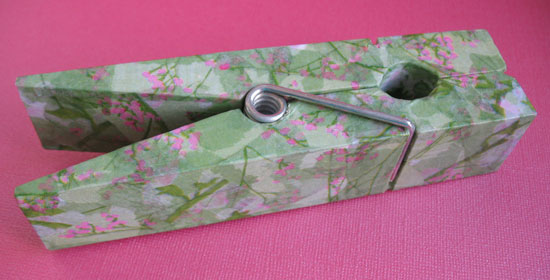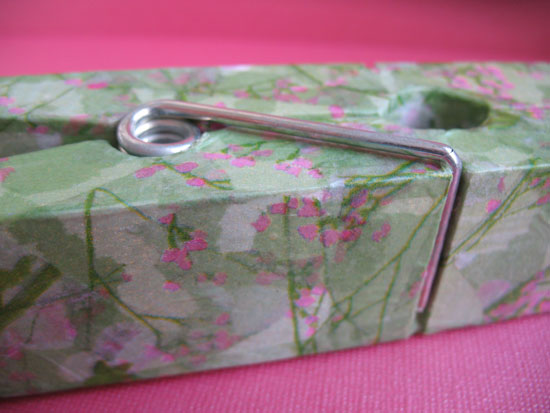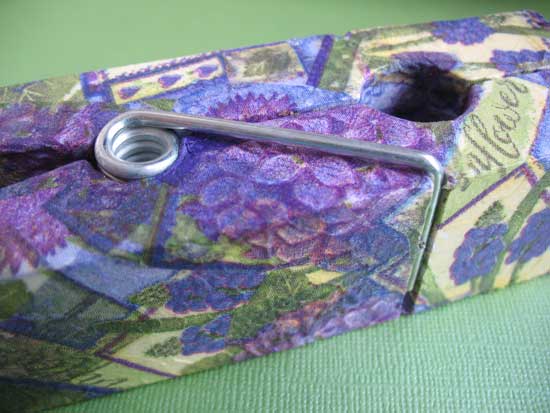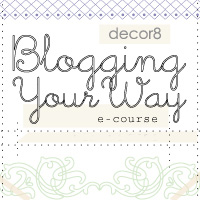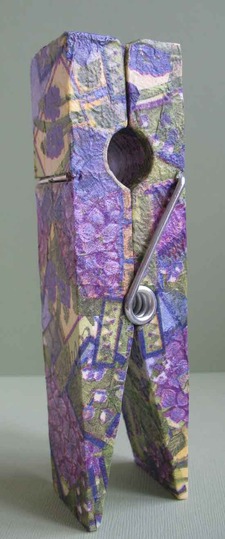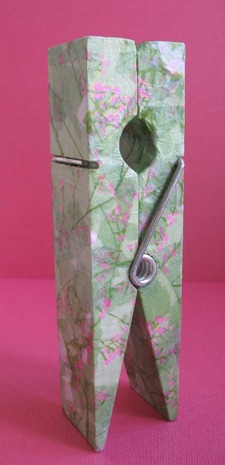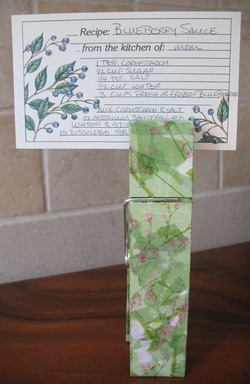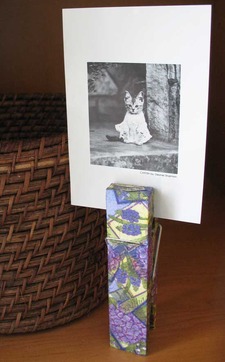Clothespin Chic Tutorial
 Monday, February 22, 2010 at 6:00AM
Monday, February 22, 2010 at 6:00AM 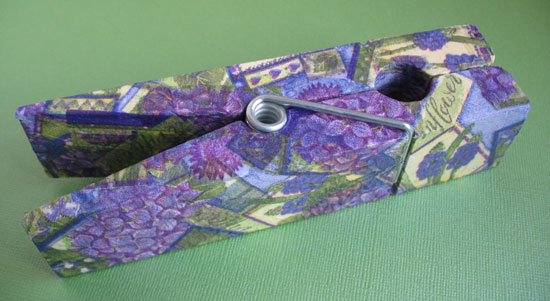
I found these oversized (6”) clothespins at Oriental Trading Company. The ones I ordered are painted white. You can also find natural finish pins at Create for Less. This project requires only a few easily obtained supplies:
- Large clothespin
- Paintbrush
- Scissors
- Cocktail napkin or tissue paper
- Modge Podge or white glue
Begin by selecting the paper you will use to cover the clothespin. I used two different types on the two clothespins I created. For the purple/green one I used a cocktail napkin with floral designs. Most napkins are more than a single ply so you want to start by carefully separating the patterned layer from the other plies. This makes the paper thin, transparent and easy to work with. Next, cut out the various motifs on the napkin. You do not have to be too careful doing so. You might choose to “fussy cut” a few motifs to use as the top layer, especially if there are words printed on the napkin.
If you are going to use tissue paper begin by tearing the paper into small squares. Again, the shape of the squares is not critical – you will be tearing them further when you apply them to the clothespin.
You could also use other patterned paper such as scrapbook paper but the sheer quality of tissue makes it easy to mold and bend the paper to fit the curves of the clothespin.
Separate the spring mechanism from the wooden arms of the clothespin. Here's a little tip: if you only have one clothespin take a digital picture of the side before you take it apart. It helps to have a visual aid when it comes time to put it back together.
Your materials should now look something like this:
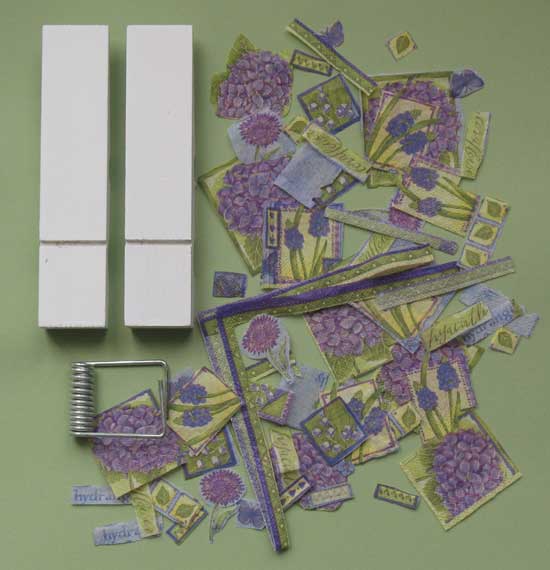
Modge Podge (MP) is a glue, sealer and finish all in one. It comes in matte or glossy. You can also use plain white glue though the finish is not quite as lustrous. One jar of MP will last a long time. Choose a clean paint brush for the project. The MP washes out with water but you may want to dedicate a brush to the cause.
Begin by painting a small area of one wooden arm with the MP covering the top and sides.
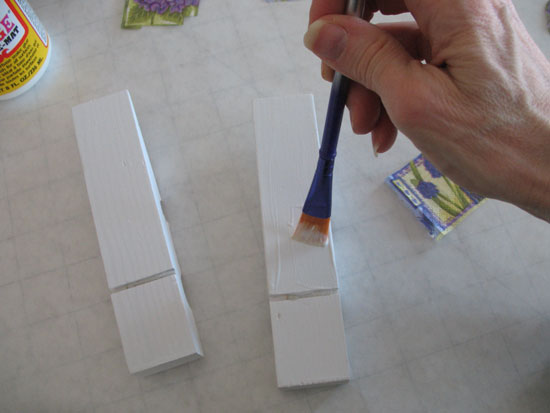
Place a piece of paper on the glue and brush additional glue on top. Use the paintbrush to smooth the paper and mold it to the clothespin. Continue covering the surface of the clothespin, overlapping paper and adding MP as you go. The tissue is fragile when wet so take care to gently brush additional MP on top. I recommend you start on the underside of the wooden arm so the final application will be from the top and wrap around to the underside. Apply paper in the grooves on the front side of the pin and use your brush to press the paper smoothly down into the crease. Ensure that there is no extra glue in this crease so the spring mechanism can seat back into the groove.
You may need to work in stages as holding wet areas causes the paper to stick to your fingers and tear. Build up several layers of paper – the transparent quality of the tissue will create lots of depth and texture. If your paper includes text apply this as the top layer so the writing will show.
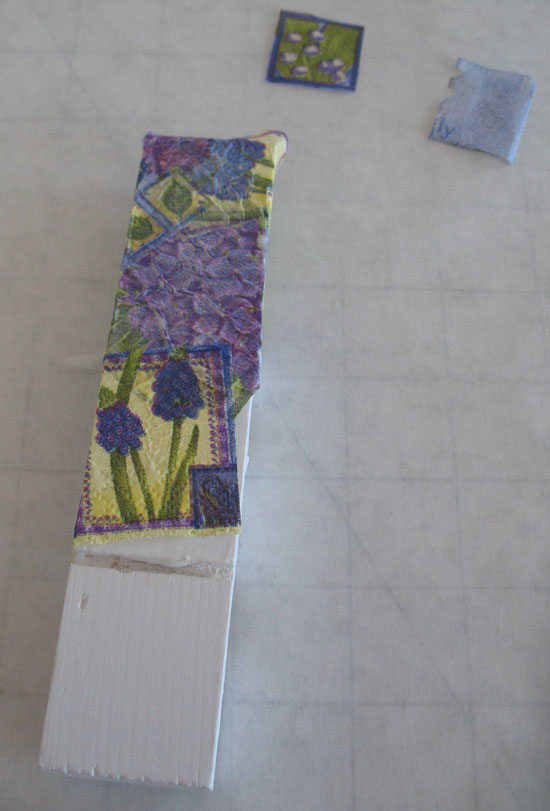
When you have completed one area or an entire side make sure you have a thick coat of MP over all of the paper and let dry thoroughly.
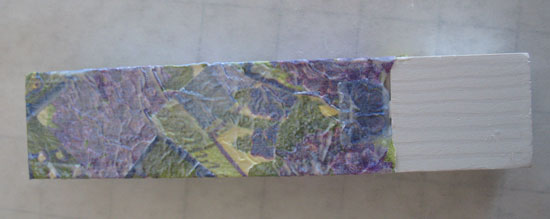
Continue layering paper until the entire clothespin has been covered. Again, let the glue dry thoroughly. Here’s what my clothespin parts looked like when I had finished.
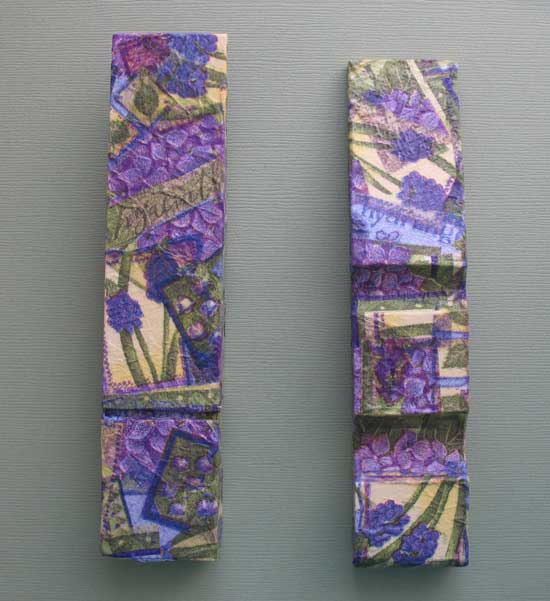
Carefully reassemble the clothespin. This is easier if you have four hands as the spring is very tight. Be prepared for some damage to the paper during this step. This can be easily repaired after the clothespin is back together. Just take a little MP and a tiny piece of paper and glue it over any scrapes that occur.
Here are some shots of my completed clothespins. Click on the smaller thumbnails to view the full sized photo. The light green/pink one was created using torn pieces of tissue paper. I love how the layered paper shows through and gives so much depth to the project. Enjoy making your own and please send me a picture.
